UNO
UNO is a minimalist barbell-based training program for beginners who want to get stronger and increase their muscle-building potential.
1. The program.
UNO is a three-day-per-week program. You lift on non-consecutive days with a two-day break after the third training day. The classic Monday-Wednesday-Friday works, as does any combination that respects the rule. There are two different training sessions in the founding program:
Session 1
A) Back squat (3×5){+5}
B) 30° Incline press (3×5){+5}
C) Conventional deadlift (1×5){+5}
D) Bridge row (3×6){+2.5}
Session 2
A) Back squat (3×5){+5}
B) Overhead press (3×5){+5}
C) Conventional deadlift (1×5){+5}
D) Barbell row (3×6){+5}
You rotate between the two sessions every training day like this:
Week one:
Monday (A) – Session 1
Wednesday (B) – Session 2
Friday (C) – Session 1
Week two:
Monday (A) – Session 2
Wednesday (B) – Session 1
Friday (C) – Session 2…
On the third week, you’re back to the week one configuration.
2. The exercises.
Exercises must be performed in an effective and efficient manner. This means they must be performed through a rather full range of motion, and they must be smooth. The eccentric (lowering) phase should take two or three seconds. The concentric (lifting) phase should be powerful, yet controlled. The lifts should look graceful, not jerky.
Cracking into the technical tidbits of each exercise is an endeavor for another day. For now, the previews will have to suffice.
BACK SQUAT
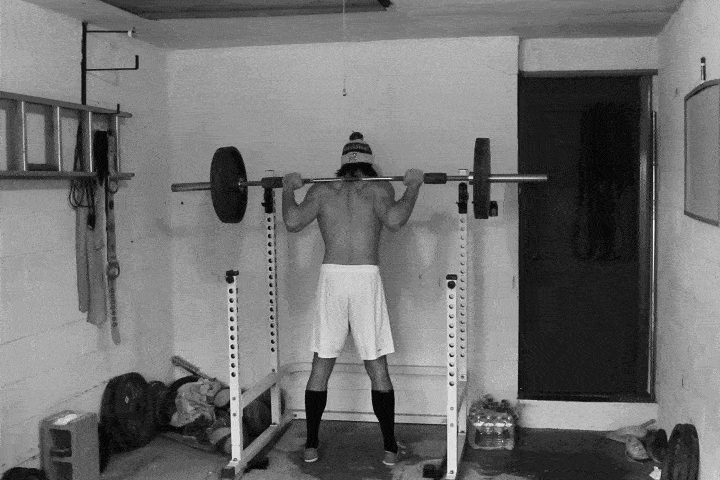
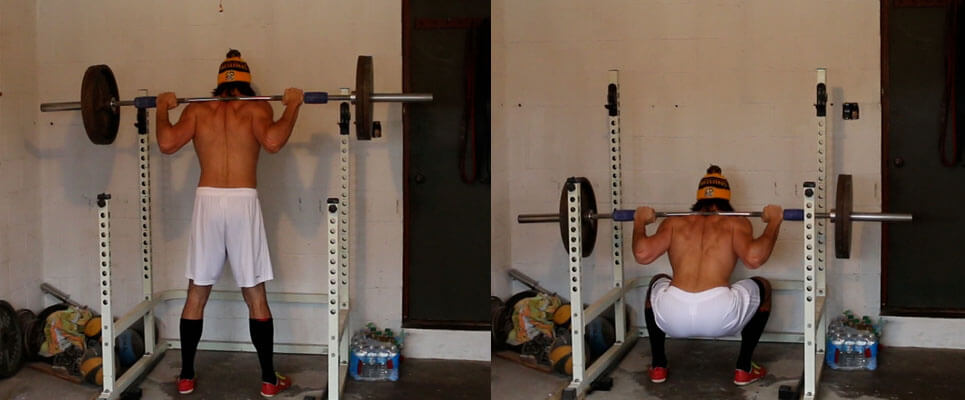
Back squat: feet under shoulders; feet turned out 10-30 degrees; bar on upper traps (high bar) or rear delts (low bar); descend until the crease of the hip is at least below the knee; keep the entire foot glued to the ground; track the knees over the toes.
CONVENTIONAL DEADLIFT
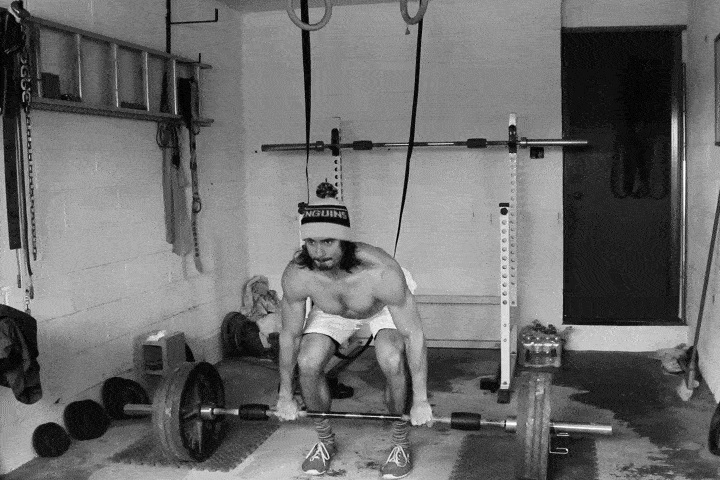
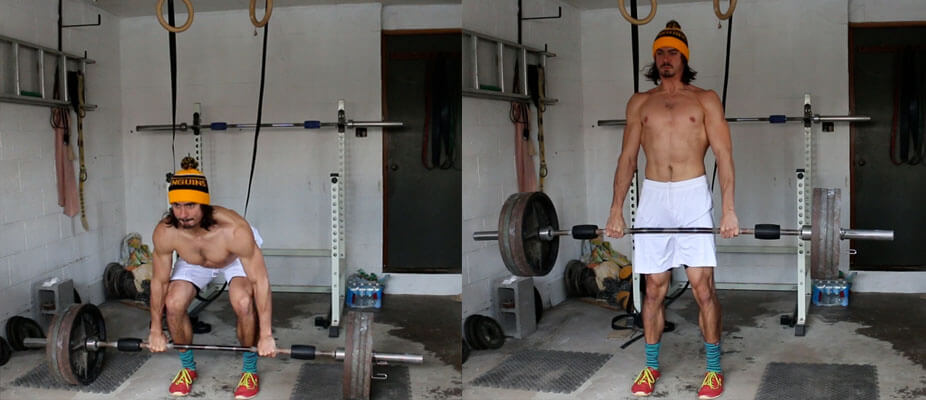
Conventional deadlift: feet under hips; feet facing forward or pointed slightly outward; in the starting position, the shoulders should be higher than the hips and the hips should be higher than the knees; lower the weight with control, don’t drop the bar; the bar comes to a complete stop on the ground between reps.
INCLINE PRESS
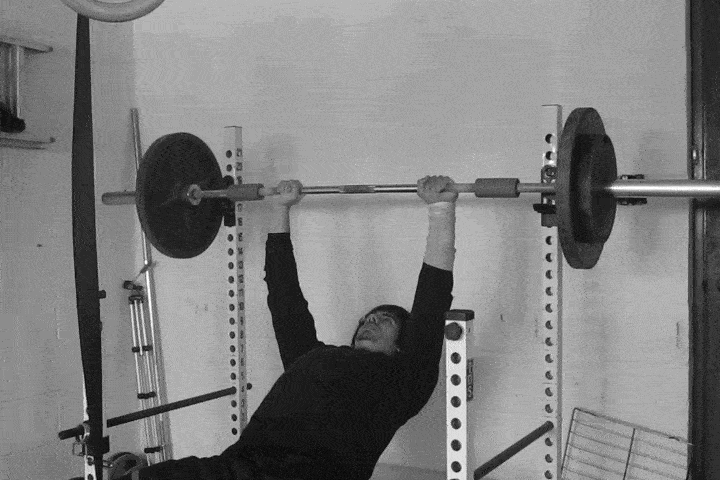
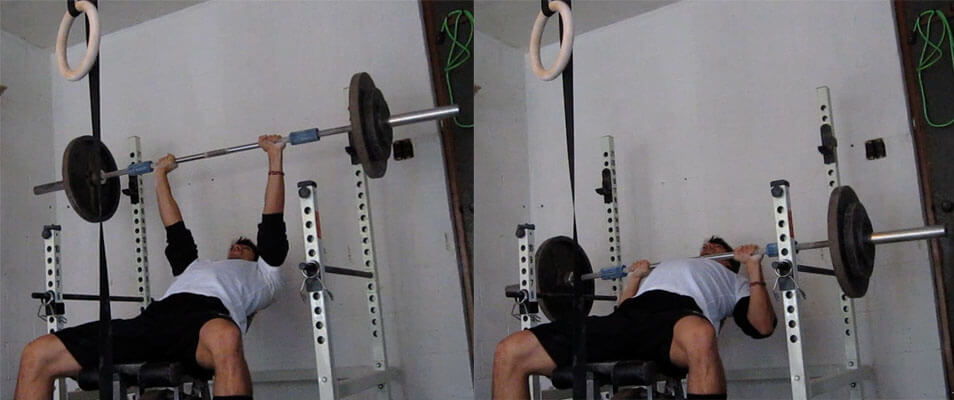
Incline press: bench at 30 degrees; hands below shoulders; elbows track 30 degrees from the torso; descend until the bar touches the sternum; keep the upper back and butt glued to the bench.
OVERHEAD PRESS
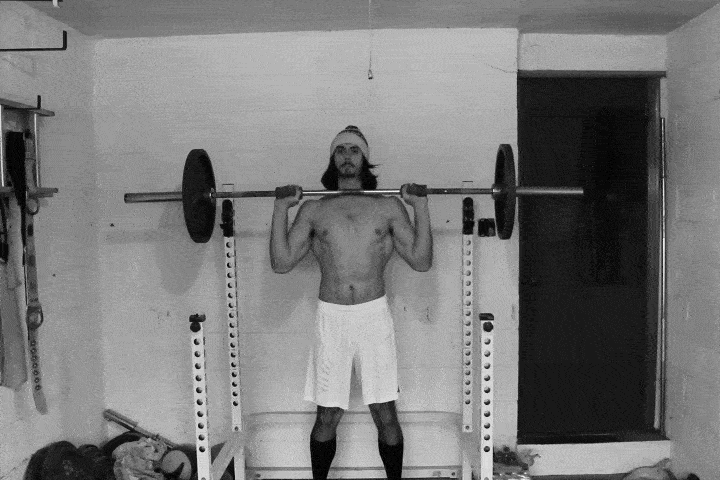
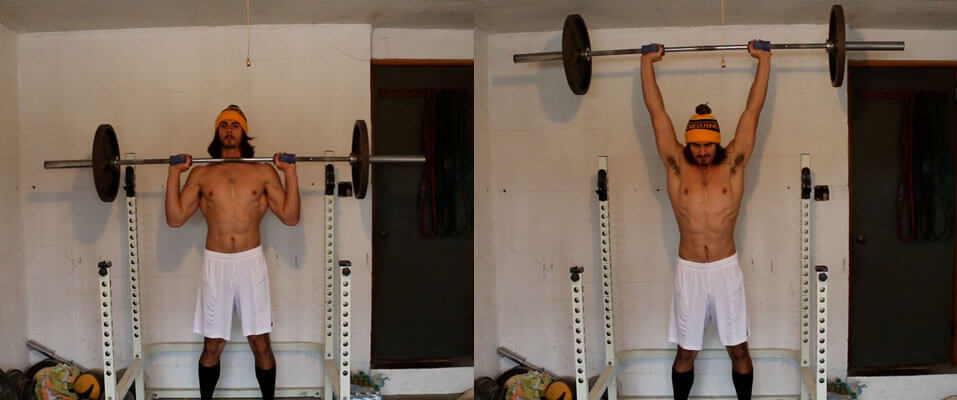
Overhead press: hands under shoulders; elbows track 30 degrees from torso; shrug shoulders to the sky after the bar clears the head; don’t bend the knees or use the lower body to help lift the bar.
BARBELL ROW
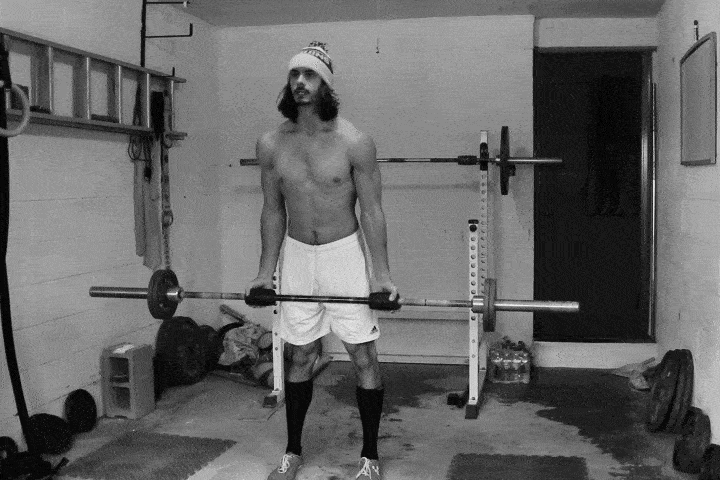
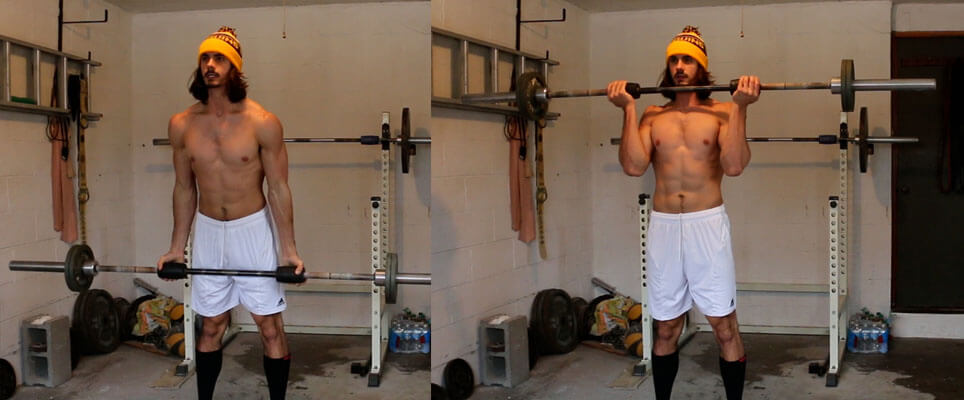
Barbell row: hands slightly beyond the shoulders; hinge at the hips; torso stays parallel to the floor throughout the lift; shoulder blades squeeze together to initiate the lift; the bar is held frozen in the top position for a second; in the top position, the elbows are pulled behind the torso.
BRIDGE ROW
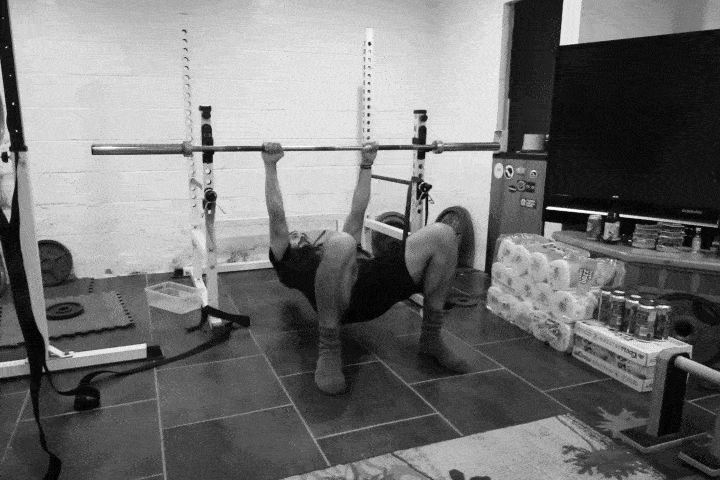
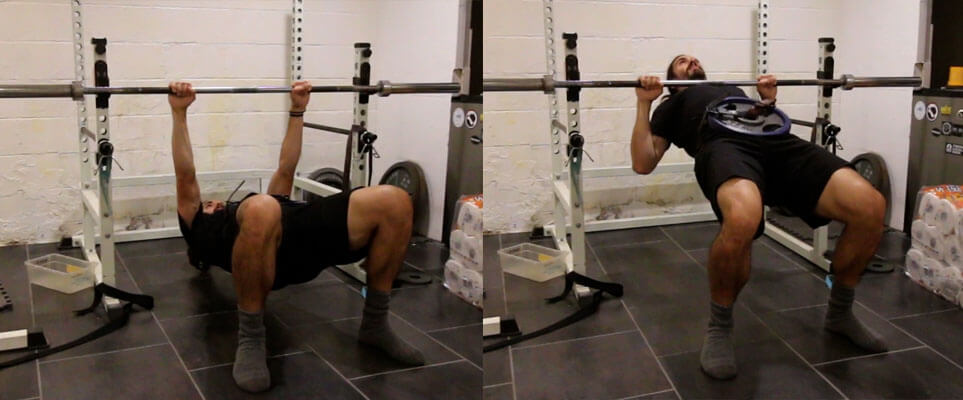
Bridge row: hands just beyond the shoulders; body somewhat horizontal to the ground throughout the rep; use belts or a backpack to add weight to your torso; pause each rep at the top, squeezing your shoulder blades together; in the top position, the elbows are pulled behind the torso.
3. The notations.
3a. Letters prior to the exercises state the order of operations. Do exercise A first. Complete all sets of A exercise before moving to B exercise. Start B exercise after A is finished. Complete all sets of B exercise before moving to C exercise…
3b. Numbers in parentheses state the number of work sets and reps you should do. I always use the (SETS x REPS) format, so (3×5) is three work sets of five reps. Work sets are the sets that drive progress and the ones you track over time. They’re done in sets-across style: You lift the same weight every work set. (3×5) means you do 3 sets with 5 reps at “x” weight.
(3×5)@95
Three sets of five reps at 95 pounds.
First work set: 5 reps @ 95 pounds
Second work set: 5 reps @ 95 pounds
Third work set: 5 reps @ 95 pounds
3c. Numbers and symbols in brackets state the method of progress for each exercise. In this founding program, you’re either adding five pounds {+5} or two-and-a-half pounds to the exercise every time it’s trained. This is known as a linear progression.
4. The unmentioned.
4a. Warmup. You should warmup prior to your work sets. Warmups should have at least two phases. The first phase prepares the involved joints for battle. Nothing does this better than 3-D joint rotations. The second (optional) phase increases the body’s temperature and gets the blood flowing. Can be done by skipping rope for a minute or two. The third phase is the most important and consists of performing the lifts in the scheduled session with lighter weights leading into the work sets. A few guiding principles:
First, warm-up sets start lighter with higher reps and finish heavier with lower reps. The early sets get the blood flowing. The later sets awaken the nervous system.
Second, always start warm-up sets with the empty bar or your body’s weight. If either of these is close to your work-set weight, you might need to warm up with light dumbbells or a different (easier) exercise that can help prepare the tissues for what’s to come.
Third, only use 10-pound, 25-pound, and 45-pound plates. Don’t meddle with the smaller plates. Too much precision for warm-up sets. Will only cause fatigue without impacting your readiness.
When you’re just getting started, you may only need 1-2 warm-up sets. Say you’re doing incline presses with 135 pounds on your work sets. To warm up, you start with 5 reps with 45 pounds (empty bar), then you do: 3-5 reps with 95 pounds and 1-2 reps with 115 pounds. This is a good warmup.
As you get stronger, you’ll need more warm-up sets. Say you’re doing back squats with 275 pounds on your work sets. To warm up, you start with 5 reps with 45 pounds (empty bar), then you do: 5 reps with 135 pounds, 5 reps with 185 pounds, and 1-2 reps with 225 pounds. (Depending on your personality, you might also benefit from doing 1 rep at 245 pounds.)
Warm-up sets are more art than science. Doing too many sets or doing too many reps with a heavier weight will drain you before your work sets. The golden rule: excite, don’t exhaust. As long as you’re trying to excite rather than exhaust, don’t be afraid to experiment.
4b. Rest between sets. Maximum rest between work sets is five minutes. You don’t have to wait five minutes between work sets. You should rest until you feel fresh enough to tackle the next set. Might only take 10-60 seconds during warm-up sets and 90-120 seconds during the first few week’s work sets. Eventually, as you get stronger, you will need more rest between work sets, but the cap is five minutes. Don’t cut your rest periods short in an attempt to feel the burn or make yourself winded.
5. The start.
Before you officially begin the program, you need to find your starting weights, which are the weights you’ll start each exercise in the program with (duh). Starting weights are specific to each exercise, but the process of finding them is universal.
You can find your starting weights by selecting a weight you know you can easily hit for the scheduled number of reps on a given exercise. For the most part, this means starting with the empty bar (weighs 45 pounds) or your body’s weight. (If you’re new to the gym and have no frame of reference, you’ll need to experiment. Don’t be afraid to play around and get familiar with the lifts for a week or two before officially starting. Also, if you can’t hit 5 reps with the empty bar or your body’s weight, you’ll have to start with dumbbells or substitute an easier exercise into the program.)
After you hit the reps, add 10-30 pounds to the bar (or your body) and do another set. The ease of your sets should dictate the weight increase. Continue this process, adding 10-30 pounds to subsequent sets, until either (a) your reps slow down and you start moving more sticky than springy, or (b) your technique deteriorates.
Subtract 20% from the final weight you lifted gracefully to find your starting weight.
Example:
Back squats with 5 reps
(1×5)@45
(1×5)@75
(1×5)@95
(1×5)@115
(1×5)@135*
*Speed slowed. 20% of 135 is around 25 pounds. Therefore, the starting weight would be 115 pounds (135 minus 25).
In general, you’re always better off with conservative starting weights. If you wanted to start every exercise with the empty bar, you could (if you’re patient). There’s little harm in starting too light. There’s great harm in starting too heavy.
Once you find your starting weights, you can officially start the program.
6. The progression.
Each exercise begins with their respective starting weight. From here, you add weight to every exercise every time it’s trained. This is known as a linear progression. The amount of weight you add on a session-to-session basis depends on the exercise.
The lightest plate in commercial gyms tends to be 2.5 pounds, which means the lowest improvement increment commonly available for barbell exercises is 5 pounds (2.5 pounds to each side of the bar). This is dumb. Eventually, you’ll want to get some fractional plates (click here for a reasonably priced set on Amazon). With fractional plates, you’ll be able to add 4, 3, 2, and 1 pound(s) to every exercise. This will be valuable in the future.
For starters, I recommend
adding 5 pounds to squats, deadlifts, incline presses, overhead presses, barbell rows.
adding 2.5 pounds to bridge rows.
7. The play-by-play.
Let’s assume you took one week (three training sessions), worked on your technique, and found your starting weights.
- 105 pounds for the squat
- 135 pounds for the deadlift
- 95 pounds for the incline press
- 45 pounds for the overhead press
- 45 pounds for the barbell row
- 0 pounds for the bridge row
Here’s what the first two weeks of training would look like:
DAY A MONDAY =
-
- BSQ: (3×5)@105
- INC: (3×5)@95
- CDL: (1×5)@135
- BRIDGE: (3×6)
DAY B WEDNESDAY =
-
- BSQ: (3×5)@110
- OP: (3×5)@45
- CDL: (1×5)@140
- BBROW: (3×6)@45
DAY C FRIDAY =
-
- BSQ: (3×5)@115
- INC: (3×5)@100
- CDL: (1×5)@145
- BRIDGE: (3×6)@2.5
DAY A MONDAY =
-
- BSQ: (3×5)@120
- OP: (3×5)@50
- CDL: (1×5)@150
- BBROW: (3×6)@50
DAY B WEDNESDAY =
-
- BSQ: (3×5)@125
- INC: (3×5)@105
- CDL: (1×5)@155
- BRIDGE: (3×6)@5
DAY C FRIDAY =
-
- BSQ: (3×5)@130
- OP: (3×5)@55
- CDL: (1×5)@160
- BBROW: (3×6)@55…
Your initial training sessions shouldn’t be challenging. Don’t do more. Complete your work sets. Pack your bags. Wait for the next session to come around. This program is a snowball. Keep on rolling. The intensity will ramp up in the future. Don’t rush the process.
7. The stall.
The weight jumps will become more difficult as the program progresses. Eventually, if you keep the movie going, you won’t be able to make a scheduled weight jump from one session to the next. This is known as stalling. I don’t recommend slamming UNO into a stall. You should transition to DOS a month or two into the program, moons before you sniff the stall.